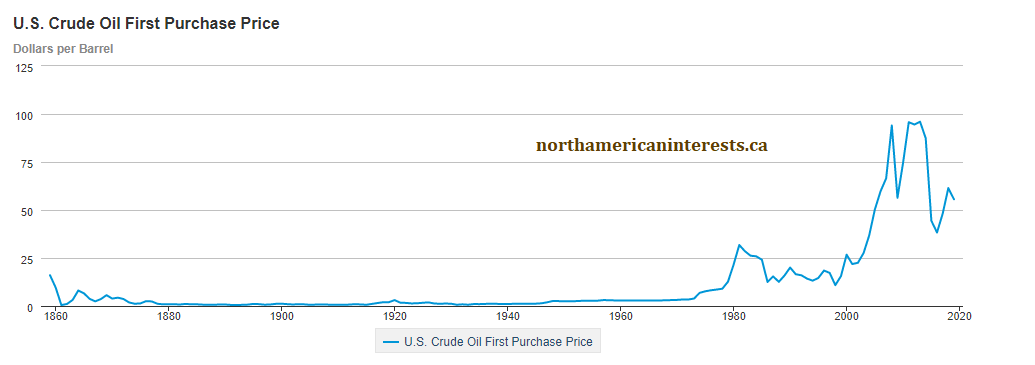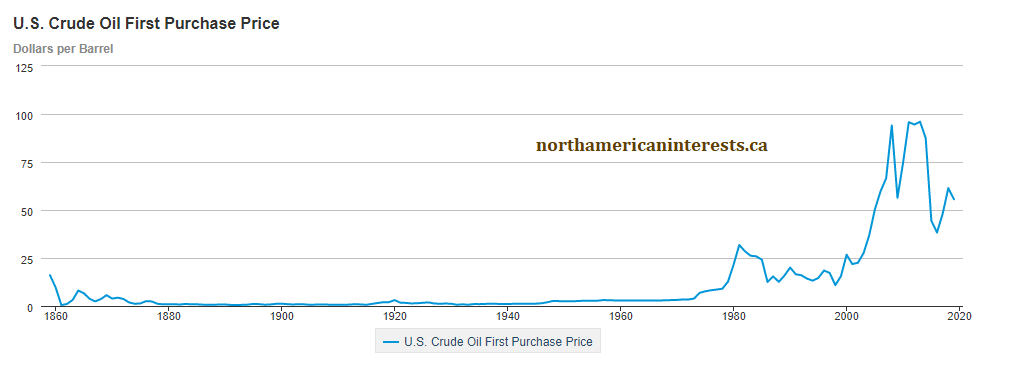Few inputs impact the U.S. economy as much as the price of oil. Oil powers the cars, trucks, and airplanes that transport people and products for the entire economy. As oil prices rise, costs go up for transportation companies such as airlines and freight delivery companies, squeezing their profit margins. Downstream of these companies, customers who rely on them to get products to market are similarly impacted by higher prices. In contrast, most companies in the energy business benefit from higher oil prices, either from higher revenues for oil, or because of increased demand for substitute energy sources such as ethanol and clean energy. Car companies with fuel conservation technology -- such as hybrid engines -- can expect sales to go up as consumers feel the pinch of higher prices at the pump, while those who rely on sales of SUVs may find their business models challenged.
Why Oil Prices Rise or Fall
Generally speaking, there are three reasons for oil prices to rise:
- Increases in Demand: Demand for oil, as well as demand for energy in general, is closely tied to the global economic cycle. In periods of economic growth, new factories consume energy, shippers transport more goods and consumers purchase more automobiles and take more plane trips. This demand for energy -- or even news suggesting the economy is heating up -- pushes up the price. Conversely, during periods of economic contraction such as recessions, demand for oil tends to fall, leading to reductions in price
- Reduced Supply: Opec periodically decide to pump less oil out of the ground in an effort to raise price and, therefore, increase revenues for countires that export oil. Additionally, oil supply can be impacted by terrorist attacks or other disruptions to the transportation and refining networks -- including pipelines, shipping facilities, and refineries -- that bring oil from where it is extracted to the consumer. Additionally, hurricane seasons can damage oil platforms in the gulf, reducing the amount of oil supplied to the U.S.
- Currency Fluctuations: The United States imports much of its oil, and that oil is purchased abroad in U.S. dollars. The changing value of the dollar in comparison to other currencies impacts the price paid by end users. A strong dollar means a lower price, in dollars, and a weak dollar means more dollars must be spent to purchase the same amount of oil.
Positive Exposure
Several categories of companies stand to gain from rising oil prices:
- Alternative energy companies such as Daystar Technologies DSTI and First Solar FSLR enefit from higher oil prices because their products are more cost-effective when oil prices go up.
- Companies with Energy-Conserving Technology such as Toyota TM benefit from higher oil prices because high oil prices lead consumers seek out ways to reduce the amount of gasoline they use.
- Oil exploration companies prospect for oil, and then sell the rights to their discoveries or the crude they produce to a larger company. These companies are particularly sensitive to the price of oil, as they commonly take ownership of delapitaded oil fields and apply advanced (and expensive) technology to squeeze more oil out of the ground. At low oil prices, they cannot profitably extract any oil, but when oil prices rise these companies' valuations can skyrocket. Companies with right to extract oil from Canadian oil sands are particularly sensitive to changes in the price of oil because of the expense of producing oil in this fashion.
- Oil Majors are the very largest, fully integrated oil companies. These companies explore for and produce crude oil and natural gas; they transport it by pipeline and tanker; they refine crude oil into finished petroleum products; and they also market crude oil, natural gas, and refined petroleum products to industrial users and retail consumers. As oil prices rise, these companies' proven reserves increase in value; they can sell their product for more money on the open market and stand to benefit from higher revenues. Major companies include companies such as Exxon and British Petroleum.
- Independent Oil and Gas producers are partially, but not fully integrated oil companies. For example, an independent oil company might produce, transport, and refine but not market petroleum products to the end user. Or it may produce and transport without refining. These companies include companies such as China Petrochemical Corp (SNP), an integrated oil company which also manufactures plastics and operates drive-thru McDonalds franchises in The People's Republic of China, or Cnooc. (CEO), a company which explores for and extracts oil from the South China Sea. As the price of oil goes up, these companies can sell oil at a higher price, increasing their revenues.
- Oil and Gas Refining & Marketing companies purchase crude oil, process it and re-sell it to the end-user. Companies include Royal Dutch Shell (RDS.A) and Valero Energy (VLO). These companies sometimes benefit from higher oil prices, depending on whether the price they pay for oil from companies that extract it from the ground goes up as well. If rising oil prices are a result of limited refining capacity, these Oil and Gas Marketing companies will benefit from higher oil prices because their prices will tend to stay the same even as their revenues increase.
- Oil and Gas Equipment and Services companies sell technology, equipment, and expertise to companies prospecting for oil. These companies benefit from higher oil prices because their most expensive technologies become cost-effective only when oil prices are high. Major players include Schlumberger (SLB) and Haliburton (HAL).
- Oil and Gas Pipeline companies build supply pipelines and stand to gain from increased construction when oil prices are high. They include Williams Companies (WMB) and Enbridge
- Rising oil prices increase costs for many companies. These costs may be difficult to pass on to customers, thereby eroding profit margins.
- Rising oil prices reduce consumer demand for products that consume a lot of oil.
- Rising oil prices make travel more expensive
- Shipping companies are harmed by higher oil prices because oil is necessary to operate the planes, trucks, and ships that transport goods around the globe. These companies include brand-name trucking companies such as FedEx (FDX) and UPS as well as industry-focused companies such as (TNT) and Conway Trucking (CNW) and international shipping companies such as Teekay Shipping (TGP) and Frontline (FRO).
- Airlines such as Southwest (LUV) are harmed by rising oil prices as jet fuel accounts for as much as 30% of the cost of running an airline. Because most airlines' profit margins are already fairly small, rising oil prices can eliminate many airlines' profits.
- Chemical companies and plastic manufacturers such as Dow Chemical Company DOW, 3M Technologies MMM and Goodyear GT are harmed by higher oil prices because petroleum is key ingredient in the materials they produce. As the price of oil rises, plastics and chemicals become more expensive to produce.
- Metal manufacturers such as US Steel and Alcoa are hurt by rising oil prices because the process of manufacturing aluminum and steel both require a lot of energy.
- Retailers are harmed by rising oil prices because shipping companies will charge them higher prices, making it more difficult for them to get their products to market. These companies include household names such as Walmart and Target.
- Online retailers such as Amazon (AMZN) and Overstock (OSTK) are harmed by rising oil prices because these companies often subsidize the cost of shipping products to their customers. Rising costs of shipping make these subsidies more expensive.
- Car companies heavily dependent on sales of SUVs for profits such as GM and Ford are harmed by rising oil prices as consumers tend to reduce their purchases of these cars when oil prices are high.
Negative exposure
Rising oil prices pose challenges for many companies as well as US consumer, which is why rising oil prices are often seen as damaging to the economy.

